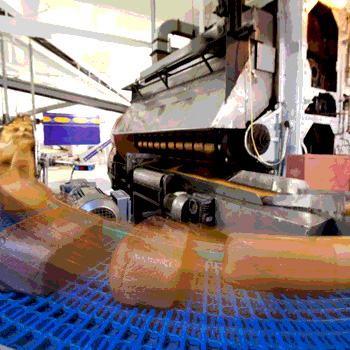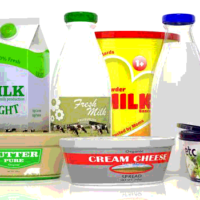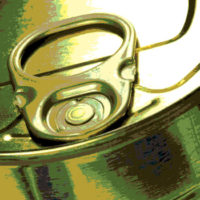The once-predictable food supply chain has become dynamically fluid. In previous years, this environment was mostly based on a unidirectional perspective, given that the key stakeholder requirements (consumer tastes and preferences, and regulatory requirements) were fairly static, and any changes occurred in a slow, staggered manner that enabled feedback loops within the supply chain to respond in an appropriate manner with minimum disruption.
Hence, the food safety systems in most organizations were designed within the context of this somewhat stable environment.
Of late, rapid technological changes (fueled by emergent technologies) have significantly altered this equilibrium, resulting in a complex, multi-directional environment: from shifting consumer preferences to the changing regulatory landscape under the Food Safety Modernization Act (FSMA) to an industrywide push towards more efficient (and increased) productivity from a business needs perspective, and all are key stakeholders to whom the food safety systems are subservient.
The word “system” is used in many human activities and depends upon contextual settings; thus, it has many definitions depending on the contextual background against which it’s employed. The more universally applied concept of a system is defined as “a set of interrelated and interacting elements that function as a whole in transforming a given set of inputs into a stated or expected outcome” (which amounts to a complex interactions of process aimed at achieving a given or stated objective). According to the International Council on Systems Engineering, systems engineering is defined as an interdisciplinary approach that enables the realization of successful systems. It focuses on defining customer needs and required functionality early in the development cycle, documenting requirements and proceeding with design synthesis and system validation while considering the complete problem.[1]
As in many other complex systems, food safety systems evolve or are designed as hierarchies of related systems, often hosting and, at the same time, being nested within other organizational systems such as enterprise risk management systems, manufacturing operations management systems and organizational supply chain systems at a greater level. This multiplicity in expected outcomes, inherent interactions with other systems and their environments, both external and internal, render the food safety systems open, complex systems—the core domain of systems engineering.
To elaborate further, consider the rapidly changing consumer tastes and preferences that are trending towards consumers making choices regarding their food preferences at a more discrete level based on the nature and composition of ingredients used in the production of the food (i.e., increasing trends towards organic or naturally labelled products). In addition, there seems to be an upward trajectory in the number of people with food-related allergies. The ongoing transformation of the regulatory landscape due to FSMA and the push for more efficiency in business performance as a strategic objective have increased globally, even with the financial costs associated with their implementation.
All of these changes demand that food safety systems assume adaptive self-organization, that is, the ability to not only return to a previous state of equilibrium prior to an influx of external impacts attributed to the volatility of stakeholder requirements but also to reorganize new stable states that are more resilient (resistant or adaptive to change)—another key aspect of systems engineering.
For the food safety systems to develop adaptive self-organization, their built-in feedback loop controls that attend to these external stimuli must be tuned or aligned to ensure that the subsequent triggers initiated in response to these stimuli are at least synchronous with the system’s internal, functional interactions and interrelationships.
For example, the U.S. Food and Drug Administration (FDA) is adopting a big data approach in terms of risk assessments and outbreak investigations by transitioning to a whole-genome sequencing technology that provides more detail in fingerprinting foodborne pathogens. This method possesses a higher capacity to establish the temporal association of a given pathogenic strain with a given multi-state, multi-year outbreak and move away from the current pulsed-field gel electrophoresis technology, which is more limited and higher cost. In response, food safety systems should adopt the same approach for environmental monitoring programs: establishing a discrete delineation of identified “positives” (from indicator organisms) within the processing environment versus casting a wide blanket of corrective actions to address a larger pool of positives.
Another example is the readjustments that must be made in plant food safety systems in response to FSMA. As a case in point, regarding the new current Good Manufacturing Practices developed for supply chain controls,[2] a supplier program must be written (which sounds like a prescriptive requirement, giving very little room for the use or adoption of new or emerging technologies in the food safety system).
Does this mean that a facility with a food safety system that has adopted automated programs to manage and document its vendor supplier processes and controls, both from a quality and productivity perspective as a means of improving its efficiency must also develop a parallel, manual program to maintain its FDA registration status?
I certainly don’t think so; rather, the facility can develop a written policy that says its supplier control program is documented and managed electronically (a response that would be analogous to the food safety system’s functional interactions and interrelations). As a matter of fact, if industry had pushed for the usage of the term “documented” instead of “written,” it would have had a significant impact, since the facility wouldn’t even have the need for a written policy: A simple relationship diagram, depicting the various components of the supplier controls and their interactions, as designed in management software modules, would suffice! So as not to be ambiguous and unilateral, hence, equal to all (as not everyone has adopted electronic technology), we must apply a “written” law.
It is important to note here that the technical committee charged with the revision of the newly minted ISO 9001:2015 Quality Management standard identified this prescriptive requirement and did away with demanding that organizations have a written quality manual; instead, the newly revised version calls for organizations to have a documented quality policy—giving organizations leverage to choose their preference, either electronic or manual.
Therefore, many of the approaches used in designing food safety systems have inherently adopted a systems engineering approach in that most are modeled around Hazard Analysis and Critical Control Points. However, the systems are generated from a set of documents (prescriptive in nature and very inefficient) versus a true systems engineering approach, wherein documents are generated from the system (very efficient). Perhaps this is because many of the food safety systems are developed to meet documented requirements, which in essence, makes these documents a key stakeholder! For most food safety systems in the industry, their core purpose is to specifically pass audits, and other key stakeholder requirements such as consumer safety and business interests are subservient to this purpose. Instead, food safety firms should focus first and foremost on the principle stakeholder’s (the customer) requirements and align these with the regulatory requirements and business’s strategic interests.
Does this mean facilities should abandon their current food safety practitioners for a systems engineer to redesign their food safety systems? Not at all, but companies should certainly take a hard look at employing systems engineering principles to help strengthen their adaptive self-organization.
Patrick Embwaga is a food safety compliance specialist at the Hershey Company.
References
1. www.incose.org/AboutSE/WhatIsSE.
2. www.federalregister.gov/articles/2014/09/29/2014-22446/current-good-manufacturing-practice-and-hazard-analysis-and-risk-based-preventive-controls-for-human#p-634.
Should Food Safety Systems Be Engineered?



